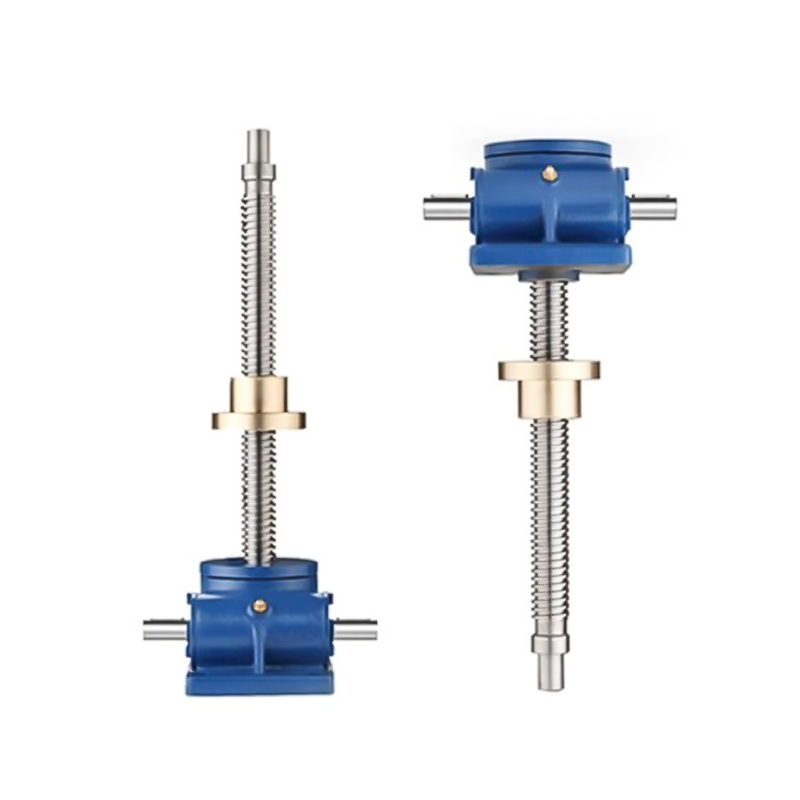Lifting screws are a type of mechanical fastener used to safely lift and move heavy loads in various industrial sectors, including construction, manufacturing, and logistics. These components are critical for ensuring that loads are handled efficiently, securely, and safely. However, what are the key design considerations that make lifting screws particularly suited for heavy-duty applications, and how do these features contribute to their reliability in high-stress environments?
One of the most crucial design aspects of a lifting screw is the material used in its construction. Given the high forces involved in lifting heavy loads, lifting screws must be made from materials that exhibit excellent strength and durability. Typically, high-strength steel alloys are used due to their ability to withstand the intense stress and mechanical wear that occurs during lifting operations. The material must not only resist deformation under load but also retain its integrity over long periods of use in harsh environments. Materials such as alloy steel, stainless steel, and even carbon steel may be chosen based on the specific needs of the application, including considerations like corrosion resistance, weight, and cost-effectiveness.
Another essential design factor is the thread geometry of the lifting screw. The threads must be finely engineered to ensure that they can handle the high mechanical loads and forces that are often associated with lifting large and heavy objects. A well-designed thread profile can optimize load distribution, reduce wear, and provide greater stability and control when the screw is used in lifting operations. In many cases, a trapezoidal or Acme thread profile is employed, as these designs offer a good balance of load-bearing capacity and mechanical efficiency, making them ideal for lifting screws.
The size and length of the lifting screw are also vital considerations. In heavy-duty applications, the lifting screw must be long enough to provide adequate lifting height and clearance for the load. At the same time, the diameter of the screw must be proportionate to the load it is expected to handle. Larger-diameter lifting screws are capable of bearing greater loads but may also require more powerful motors or winches to turn them. Additionally, ensuring the screw is of an appropriate length helps prevent misalignment or bending, which can occur when the screw is too long or too short for the application.
The surface treatment of the lifting screw plays a significant role in its durability and functionality. In environments where corrosion, abrasion, or exposure to chemicals is common, surface coatings like galvanization, anodizing, or black oxide are often applied. These treatments not only improve the screw's resistance to environmental factors but also reduce friction, which can enhance the overall performance of the lifting system. A smooth surface finish helps the lifting screw operate more efficiently, reducing energy consumption and minimizing wear and tear on both the screw and the lifting mechanism.

Lifting screws are often part of a larger system that includes bearings, nuts, and other components. The alignment and integration of these components are critical to ensuring smooth operation and load stability. The lifting screw must be precisely aligned with the lifting mechanism to prevent off-center loading, which can lead to uneven wear, increased friction, or even failure of the system. Bearings and nuts are typically selected to complement the screw, ensuring that the load is lifted evenly and securely. The bearing selection, in particular, must be made based on the application’s specific load capacity, speed, and environmental conditions to ensure optimal performance.
Another key consideration is the safety features incorporated into the lifting screw system. In heavy-duty applications, safety is of paramount importance. Lifting screws are often equipped with features such as locking mechanisms, anti-backlash devices, or fail-safes to ensure that loads are securely held in place during the lifting process. These safety features help prevent accidental release or movement of the load, which could lead to accidents or equipment damage. Moreover, proper maintenance and regular inspections are necessary to ensure that these safety mechanisms function as intended, minimizing the risk of failure during operation.
By considering the material selection, thread design, surface treatments, alignment, and safety features, lifting screws are optimized for heavy-duty applications. These design elements work together to ensure that lifting screws can perform reliably under extreme conditions, providing a crucial solution for lifting heavy loads with precision and security.


 English
English 中文简体
中文简体 Español
Español русский
русский عربى
عربى







